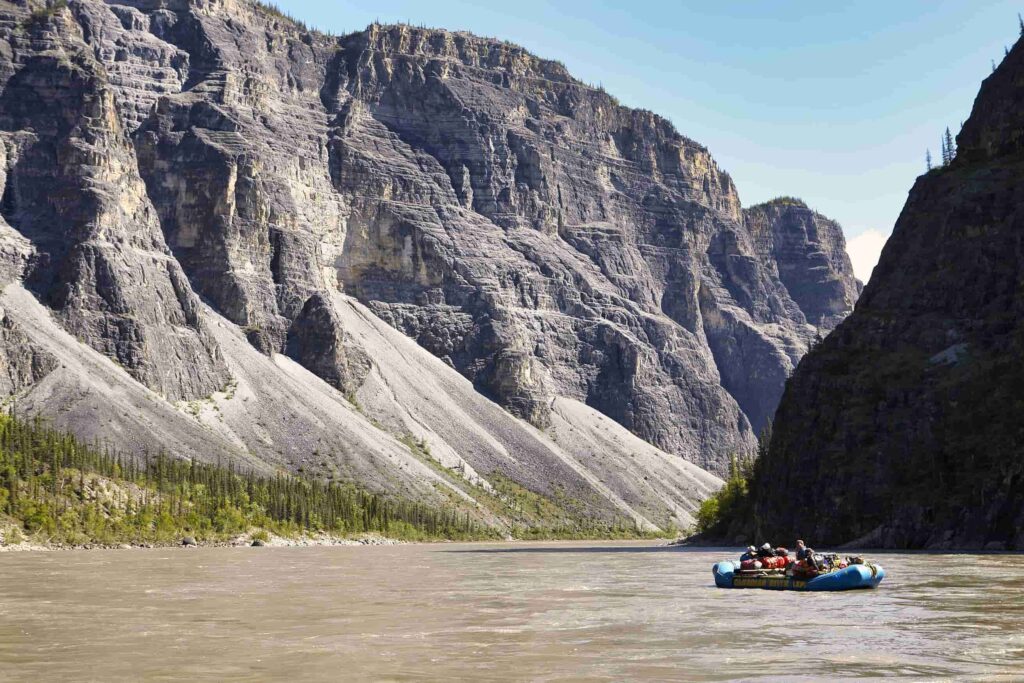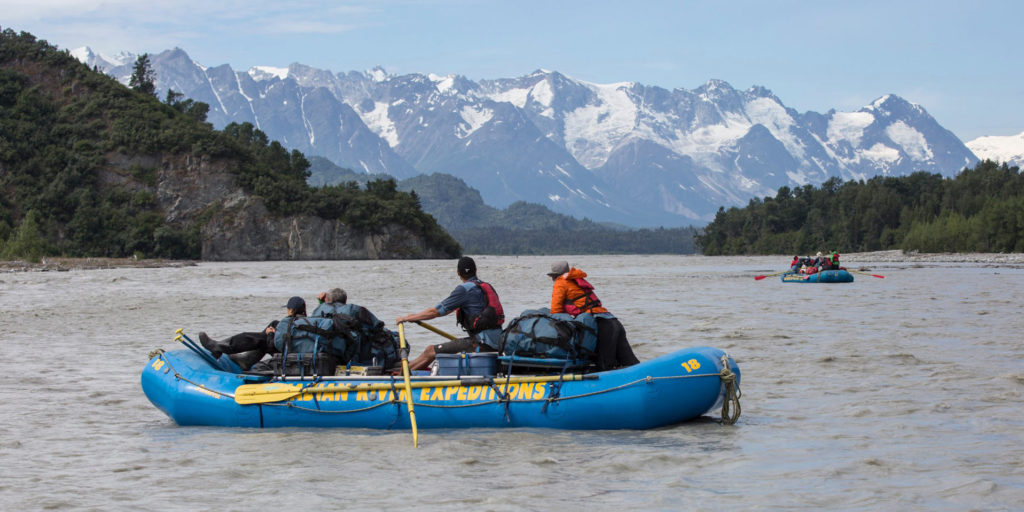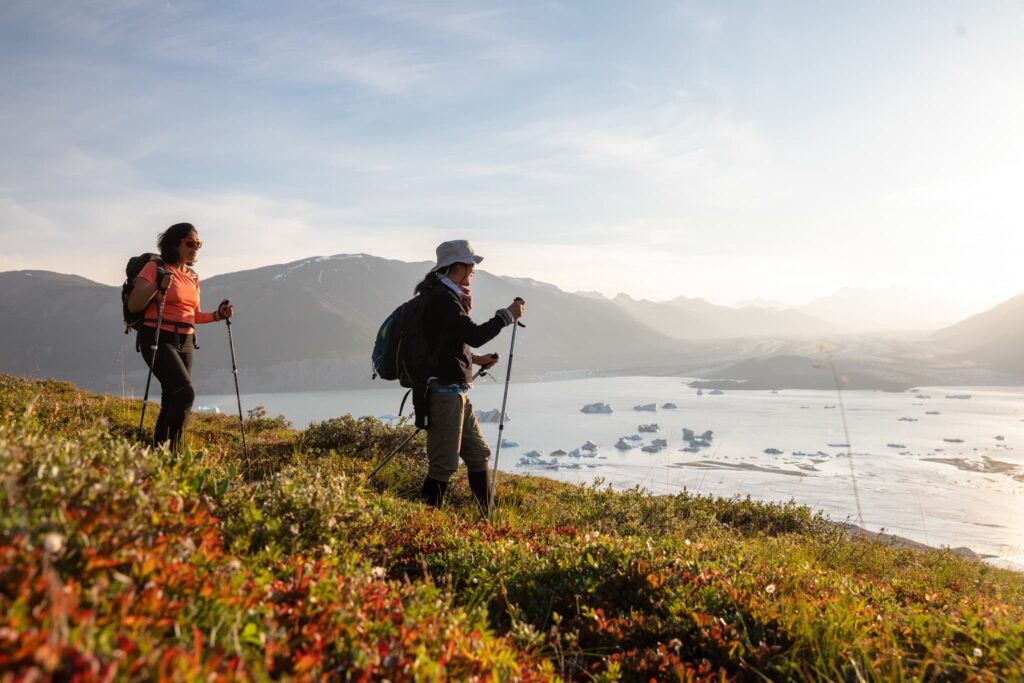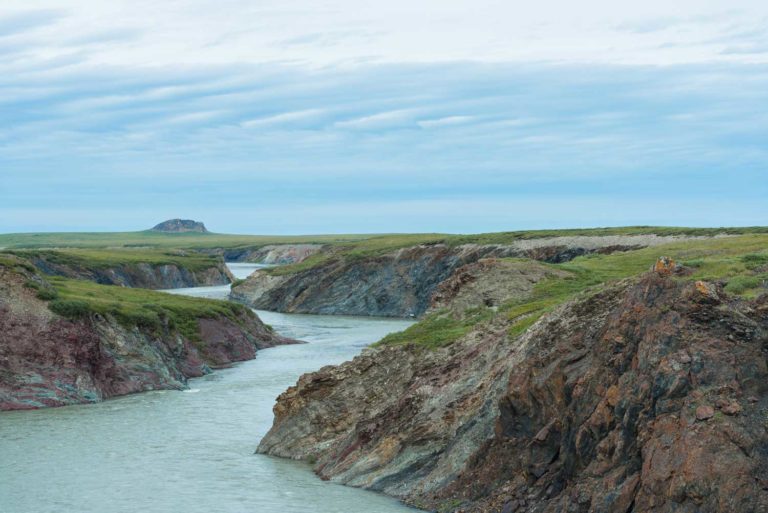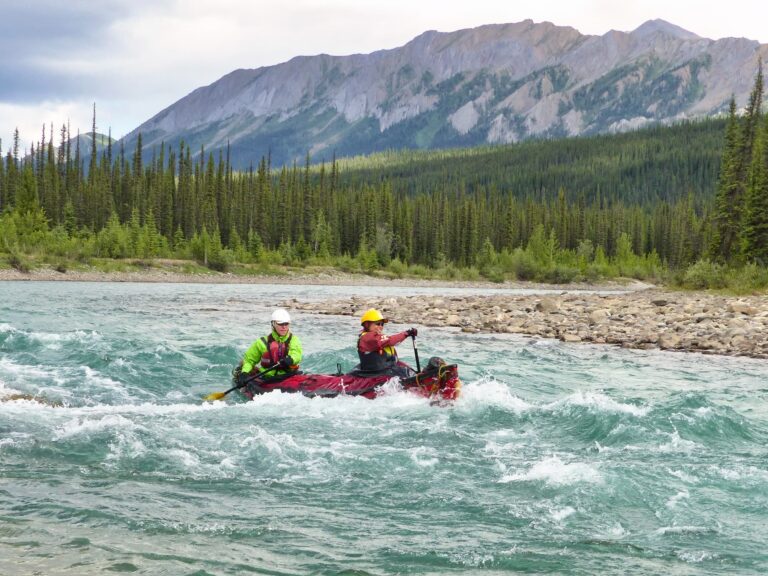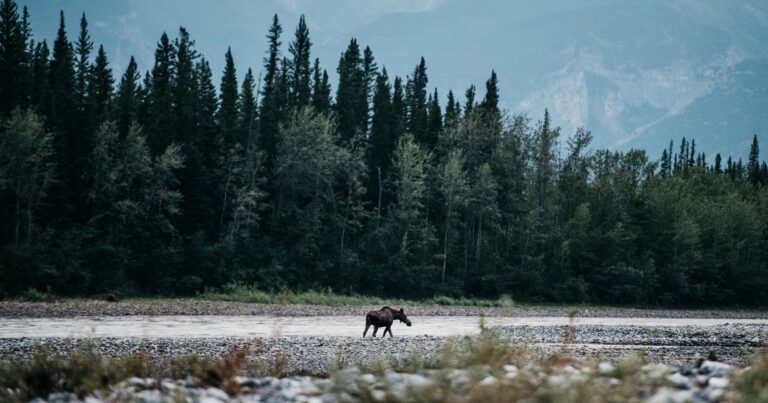I awoke to a world white with mist. As I climbed from the tent and leaned into a morning stretch a rhythmic “shwack, schwack, shwack” erupted from the eddy below camp. I straightened up to see two enormous white figures take flight just downstream of our camp. My arrival in the quiet morning had startled a pair of Trumpeter Swans. We were two days into a Nahanni Canoe expedition and while we had already come across a moose and calf and a solitary woodland caribou, these swans were the first large birds we had spotted.
Twenty years ago these majestic birds were a rarity on the Nahanni River. Known to nest in the Yohin Lake area, a cenote on the eastern edge of Nahanni National Park, these birds have recovered from the brink of extinction in the 1930’s. Hunted extensively in the 1800’s for subsistence and for their distinctive plumage Hudson’s Bay’s records show how their population plummeted in the course of only two decades. After decades of conservation, the population has now grown to close to 50,000 animals. As their population has expanded, so too have a paddler’s chances to interact with them.
As I watched the ten foot (3 metre) wingspan of these birds propel them around the next corner in the river I wondered where their brood was. Swans are particularly sensitive to having their nests disturbed and we would now have to be very careful not to startle these birds again.
The following day we aimed for a beautiful lunch spot on Oxbow Lake. Accessed through a hidden channel this lake presents a perfect habitat for Trumpeter Swans. Sure enough, as we paddled into the lake we were greeted by their white backsides as they pulled the tuberous roots of aquatic plants from the soft lakebed. This behaviour, known as dabbling, allows them to utilize their incredibly long necks, up to a metre in length to reach underwater resources inaccessible to other waterfowl.
Keeping to the other side of the lake we paddled past without causing them to take flight and were able to witness another important behaviour, preening. Like many other waterfowl, swans possess a uropygial gland. Also called the “preen gland” this sebaceous gland produces an oil that is manually spread across a bird’s feathers. Using their beak to carefully maintain this oily coating this is the secret to the lack of water on a duck’s back!
On our paddle out of the lake the swans were nowhere to be seen. To have a wilderness area where such species such as the Trumpeter swan can not only survive but thrive is a reminder of the importance of ecosystem based conservation initiatives, such as Nahanni National Park Reserve.
Back on the river a call echoed across the valley. Perhaps we would cross paths with this pair again.
Source: https://www.allaboutbirds.org/guide/Trumpeter_Swan/sounds


